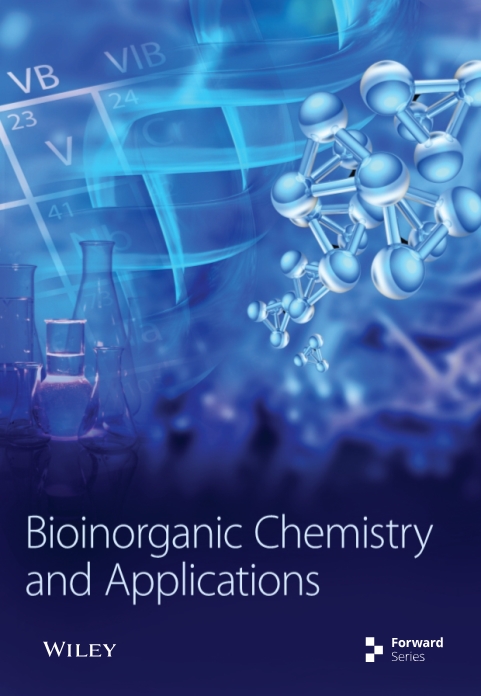莫西沙星金属配合物:合成、表征、抗菌和抗糖尿病活性与对接研究
IF 4.1
3区 化学
Q1 BIOCHEMISTRY & MOLECULAR BIOLOGY
引用次数: 2
摘要
合成了Fe(III)、Cu(II)和Hg(II)六个新的金属配合物,即3个(2、4和5)与莫西沙星(单配体)配合,另外3个(1、3和6)与莫西沙星和肼(双配体)配合。通过UV-Vis, FT-IR,元素分析(CHN),原子吸收光谱,TGA,扫描电子显微镜(SEM)和粉末XRD研究对其进行了表征。此外,对所有这些化合物进行了抗菌、细胞毒性和抗糖尿病潜力的筛选。研究表明,与莫西沙星相比,合成的金属配合物具有成为抗真菌剂的优异能力。此外,化合物1、3和4的细胞毒性在可接受范围内,与配体莫西沙星相比,具有更好的降糖潜力。有趣的是,配合物1和3的α-淀粉酶抑制活性与标准药物阿卡波糖非常接近。此外,计算研究还通过展示这些化合物与其各自结合位点的必要相互作用来验证复合物1、3和4的抗糖尿病潜力的结果。综上所述,莫西沙星的抗真菌和抗糖尿病能力通过与给定金属和二级配体的络合而显著增强,从而使其成为药物发现和开发领域中抗真菌和抗糖尿病药物的另一条途径的合适先导化合物。本文章由计算机程序翻译,如有差异,请以英文原文为准。
Moxifloxacin Metal Complexes: Synthesis, Characterisation, Antimicrobial and Antidiabetic Activities with Docking Studies
Six new metal complexes of Fe(III), Cu(II), and Hg(II) were synthesised, i.e., three (2, 4, and 5) with moxifloxacin (mono-ligand) and the other three (1, 3 and 6) with moxifloxacin and hydrazine (biligand). These were characterised through UV-Vis, FT-IR, elemental analysis (CHN), atomic absorption spectroscopy, TGA, scanning electron microscopy (SEM), and powder XRD studies. Further, all of these compounds were screened for their antimicrobial, cytotoxic, and antidiabetic potential. The study revealed that the synthesised metal complexes possess an excellent ability to become antifungal agents compared to moxifloxacin. Additionally, the cytotoxicity of compounds 1, 3, and 4 was in the acceptable range with much better antidiabetic potential as compared to the ligand moxifloxacin. Interestingly, the α-amylase inhibition activity of complexes 1 and 3 was found very close to the standard drug acarbose. Furthermore, the computational studies also authenticate the results of the antidiabetic potential of complexes 1, 3, and 4 by presenting the necessary interactions of these compounds with their respective binding sites. The overall results indicate that the antifungal and antidiabetic ability of moxifloxacin is enhanced significantly by complexation with the given metals and the secondary ligand, thereby making it a suitable lead compound for yet another avenue of an antifungal and antidiabetic agent in the field of drug discovery and development.
求助全文
通过发布文献求助,成功后即可免费获取论文全文。
去求助
来源期刊

Bioinorganic Chemistry and Applications
化学-生化与分子生物学
CiteScore
7.00
自引率
5.30%
发文量
105
审稿时长
>12 weeks
期刊介绍:
Bioinorganic Chemistry and Applications is primarily devoted to original research papers, but also publishes review articles, editorials, and letter to the editor in the general field of bioinorganic chemistry and its applications. Its scope includes all aspects of bioinorganic chemistry, including bioorganometallic chemistry and applied bioinorganic chemistry. The journal welcomes papers relating to metalloenzymes and model compounds, metal-based drugs, biomaterials, biocatalysis and bioelectronics, metals in biology and medicine, metals toxicology and metals in the environment, metal interactions with biomolecules and spectroscopic applications.
 求助内容:
求助内容: 应助结果提醒方式:
应助结果提醒方式:


